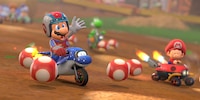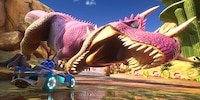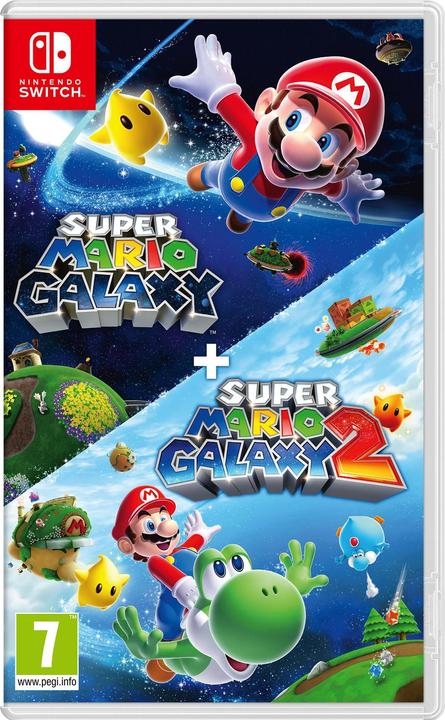

Terrible price tag, terrific games: putting Super Mario Galaxy 1 and 2 to the test
Nintendo is bringing two Mario classics to the Switch and Switch 2. The new editions are expensive, but the timeless gameplay paired with the updated visuals is well worth the price.
Nintendo is breathing new life into two Wii classics with a new edition for the Switch. The high price stirred up quite the controversy in the lead-up to the release. When bought together, Super Mario Galaxy and Super Mario Galaxy 2 cost around 70 francs or euros. If you purchase the games separately, you’ll pay 40 francs or euros for each.
Should games which are 18 and 15 years old, respectively, still cost so much money? After putting both titles through their paces, I can confidently say: yes, they should.
Why’s this? It’s simple, really: Super Mario Galaxy and Super Mario Galaxy 2 are two of the best games of all time. Thanks to the updated visuals, these awesome classics look better than ever on the Switch 2.
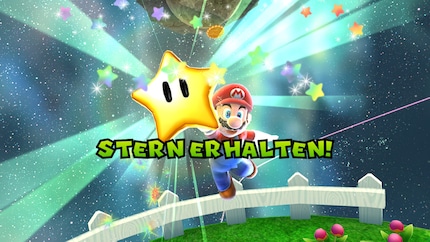
The best Mario games of all
Whether 2D, 3D, mainline or spin-off – for me, Super Mario Galaxy and Super Mario Galaxy 2 are still undisputedly the best Mario games ever.
In both of these games, the stout plumber’s mission takes him to outer space. In typical Mario fashion, the story is as flat as a Goomba after being stomped on. You’ve got Bowser here, Peach there and Mario rushes to save the day.
Still, the first part contains an enjoyable additional story where Mario is only at the periphery. On his adventure, the moustachioed hero meets Rosalina and her sugar-sweet star children, the Lumas. The story about these new extraterrestrial characters is surprisingly melancholic and emotional.
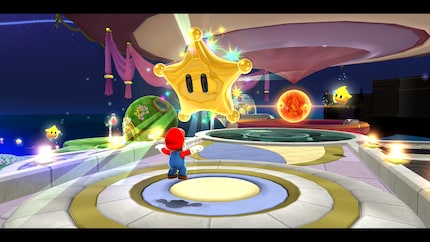
On his rescue mission, Mario jumps through all levels of outer space, where gravity plays crazy tricks. Most of the time I’m not moving on flat surfaces, but running and jumping over smaller, floating land masses in outer space, which I can explore from all sides due to their gravitational pull.
Even for what seems like the hundredth time, it just feels damn cool to jump over an «abyss» at full speed and then land on the underside of the planet.
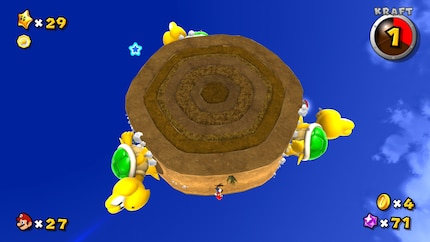
The wealth of ideas in both games’ level design remains unmatched even after all these years. Each galaxy I visit is dedicated to its own theme and looks different from the previous one. One minute, I’m discovering a bee kingdom, the next minute I’m swimming through gravity-defying bodies of water in a tropical paradise.
The gameplay mechanics change by the minute too. Sometimes I’m jumping from one mini planet to another, sometimes I’m fighting huge bosses in zero gravity and sometimes I’m in a 2D section where the direction of gravity changes up or down. Amongst all this, there are also a lot of minigames where I use motion controls to balance on a ball or race on a manta ray. It’s crazy!
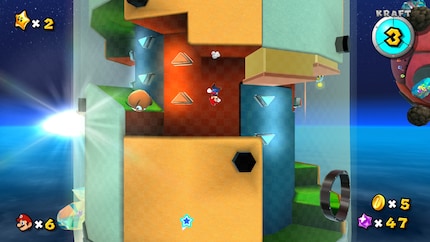
The new power-ups are also some of the best in the whole history of Mario. I fly through the air as Bee Mario, create temporary platforms as Cloud Mario or dig my way through various celestial bodies with a drill.
The ideas behind Super Mario Galaxy and Super Mario Galaxy 2 are easily enough for two dozen games. The impressive thing about this variety of gameplay is that every mechanic works. There are no complete flops, no sections I’d rather skip. The gameplay doesn’t feel dated either, even though the games are getting on a bit. This is sheer, timeless Nintendo magic.
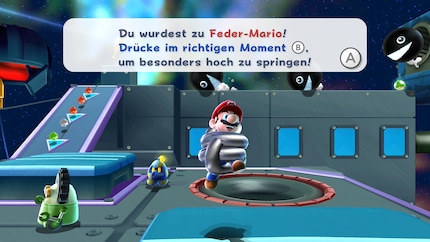
What are the differences between the two games?
Even though both Galaxy games look pretty similar at first glance, there are some crucial differences between the two classics, which are mainly apparent in the level design.
While I can discover more expansive, open-ended levels now and then in the first Galaxy game, almost all of the galaxies in the second part have been kept linear. It’s not about discovering a game environment in detail (as is the case in Super Mario Odyssey, for instance), but the aim is just to make it to the end point. Many galaxies almost feel like levels from 2D Mario games, where there’s only one way to get to the destination.
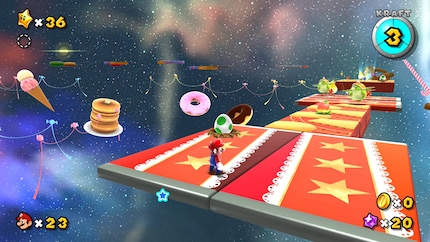
Super Mario Galaxy 2 also has more items and power-ups than in the first instalment. In some levels, I can even ride on Yoshi and have him eat my enemies. Mlem!
On the whole, Galaxy 2 goes one step better when it comes to the repertoire of ideas and varied gameplay. But the sequel feels less atmospheric and special because of this. Instead of Rosalina and her Comet Observatory, I get a spaceship in the shape of Mario’s head as the central hub.
That’s cool, but the beautiful, melancholic atmosphere is lost.
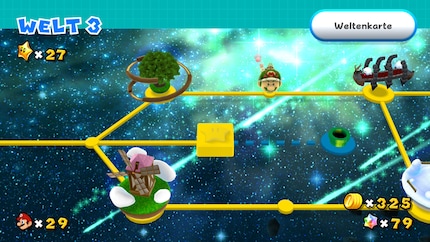
A word of warning if you haven’t played this duo yet: Galaxy and Galaxy 2 are definitely some of the more difficult Mario games. In many sections there are black holes in the background – if I fall into the abyss here, Mario immediately dies.
Galaxy 2, in particular, majorly ramps up the difficulty in some levels. That’s why I recommend starting with the first game to get a feel for the special gravitation gameplay.
Dreamy 4K graphics
Nintendo has given both games a makeover. On the Switch, the games run in 1080p at 60 fps (TV mode) and 720p at 60 fps (handheld mode). I tested the duo on my Switch 2. On this console, both titles achieve 4K at 60 fps (TV mode) and 1080p at 60 fps (handheld mode).
It doesn’t end with the higher resolution – Nintendo has also updated many textures. What’s more, the draw distance has been increased – far-away objects look more detailed than in the original. In some places, it looks like Nintendo has also worked on the lighting.
The results of this visual refresh are impressive. The art style has always been beyond reproach anyway. On the Switch 2, the games shine in their most beautiful form to date and impressively demonstrate how timeless the visual core of the games really is.
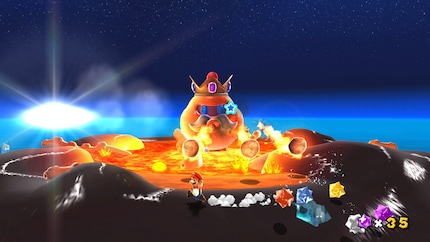
The visual refresh becomes even more apparent if you compare these new editions to the limited-edition Super Mario 3D All-Stars collection. This contained an emulated version of Super Mario Galaxy (1080p, 60 fps).
Click on the images to see them in higher resolution.
In the following example from the beginning of the game, the ground textures in the new version (above) are much sharper than in the original (below). And that’s not all – the toads in the distance no longer have angular heads.
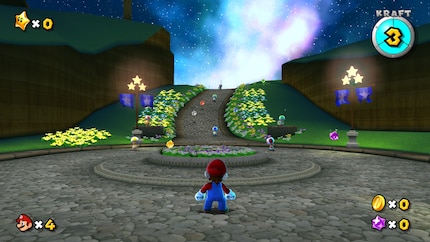
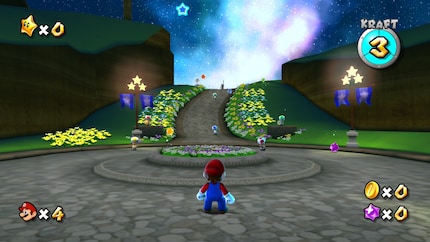
In Rosalina’s Comet Observatory, the resolution of the grass is far higher. Details in the background – like the dome – are more clearly visible.
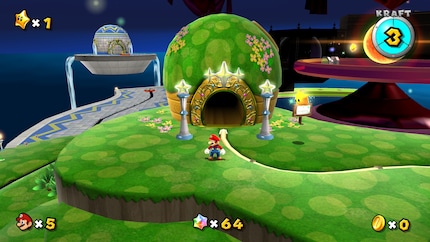
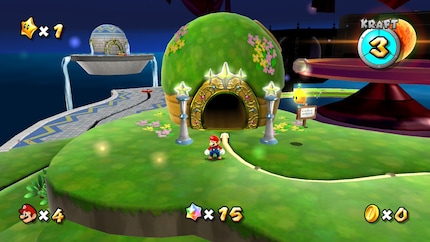
The empty nest of the first boss looks much sharper here. The ground textures of the mini planet have also been completely redesigned.
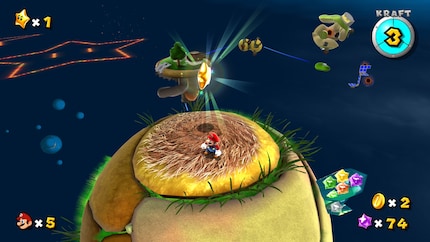
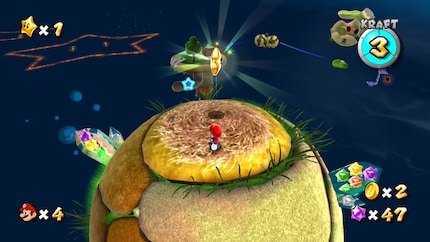
Controls take some getting used to
Timeless though the gameplay and art style may be, there’s one weakness that makes you notice the age of these classics. The controls feel like a relict from the bygone Wii era.
While Mario jumps through outer space, I collect Star Bits with a pointer along the way. I need these for several reasons, including to access new levels. On the Wii, I could use the pointer with precision thanks to the Wii remote controller. But on the Switch, I need to do this with the motion controls.
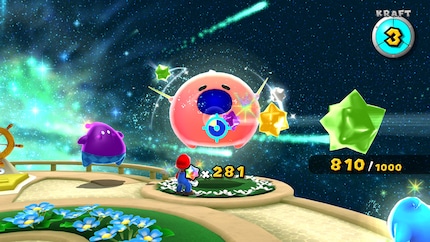
But it’s somewhat less precise than using the Wii controller’s infrared sensor. I constantly have to recalibrate the pointer by pressing the R button. This isn’t a dealbreaker – but in an otherwise well-rounded package, these little annoyances stand out.
The camera, which is really restrictive in many level sections, is also a bit behind the times. On the one hand, this is understandable – it’s easier if the game decides for me which perspective I view the already confusing gameplay from. Nevertheless, I would’ve liked a little more freedom from time to time.
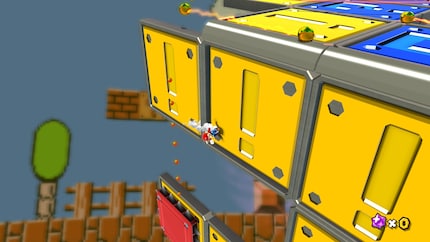
Any new content? Not really
Nintendo has enhanced the technical aspects of the two games – but held back when it came to new content. Assist mode is the main new feature. This is when you’re given more lives and are prevented from falling into black holes. This is a welcome new addition given how difficult the games are.
For fans of Rosalina, there are additional chapters from her storybook, which she reads aloud in Super Mario Galaxy. Support for amiibos is also coming. There are also mouse controls on the Switch 2 for the (very limited) Co-Star mode, where a second player takes over the pointer controls.
The soundtrack to the game can be found in the main menu. It’s terrific, by the way, and is also one of the best Nintendo has ever produced. My highlight: the Comet Observatory music:
It’s a shame Nintendo didn’t take this opportunity to add a few nice extras to the classics. With the stunning visuals, at least a photo mode would have been a good idea.
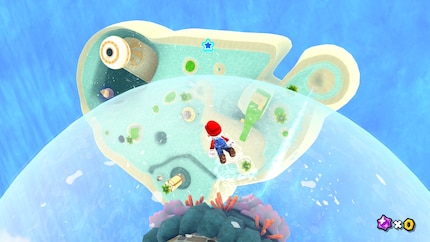
That’s enough moaning
I wanted to end the test by discussing the price, as I mentioned at the start. There’s no shortage of reasons to moan about the pricing models of modern games. Annoying battle passes, microtransactions and titles that are released unfinished or full of bugs.
As for myself, I’m also frequently critical of Nintendo’s questionable approach to the pricing of their games. Most recently with the tech demo that you had to pay for – Nintendo Switch 2 Welcome Tour– or the boring wheelchair game Drag X Drive, which should’ve been a free-to-play title.
But I don’t see any reason to moan about the new editions of Super Mario Galaxy and Super Mario Galaxy 2.
Sure, the games are expensive. But we’re talking about two of the best games of all time, which have been meticulously remastered and now look better than ever. Apart from Astro Bot, no modern platformer even comes close to the ingenuity of Mario’s adventures in outer space.
So let’s save our moaning for things that really matter, not for impressive new editions of two milestones from Nintendo’s history of video games.
Super Mario Galaxy and Super Mario Galaxy 2 will be released on 2 October for the Nintendo Switch and Nintendo Switch 2. The bundle was provided to me by Nintendo for test purposes. The two games are also available separately._
In a nutshell
Two ingenious masterpieces, now sharper and more stunning than ever
Super Mario Galaxy and Super Mario Galaxy 2 are timeless classics and mark milestones in the jump ’n’ run genre, so they’re worth the steep price. The wealth of ideas and varied gameplay remain unmatched to this day. Jumping through gravity-defying levels with Mario still feels magical, even after all these years. Only the controls are a reminder these games are a little older.
In the new editions, the two games’ timeless art style is given the spotlight it deserves. Especially on the Switch 2, the games look dreamy in 4K and with the new textures. It’s a shame Nintendo has missed this opportunity to give the games new content instead of merely refreshing their visuals.
Let’s hope with the two remasters and the newly announced Super Mario Galaxy Movie, a Super Mario Galaxy 3 is just around the corner.
Pro
- Timeless jump ’n’ run gameplay
- Ideas enough for two dozen games
- Jaw-dropping visuals with redesigned textures
- 4K output on the Switch 2
Contra
- Controls as a relic of the bygone Wii era
- Hardly any new content

My love of video games was unleashed at the tender age of five by the original Gameboy. Over the years, it's grown in leaps and bounds.
Which films, shows, books, games or board games are genuinely great? Recommendations from our personal experience.
Show all
